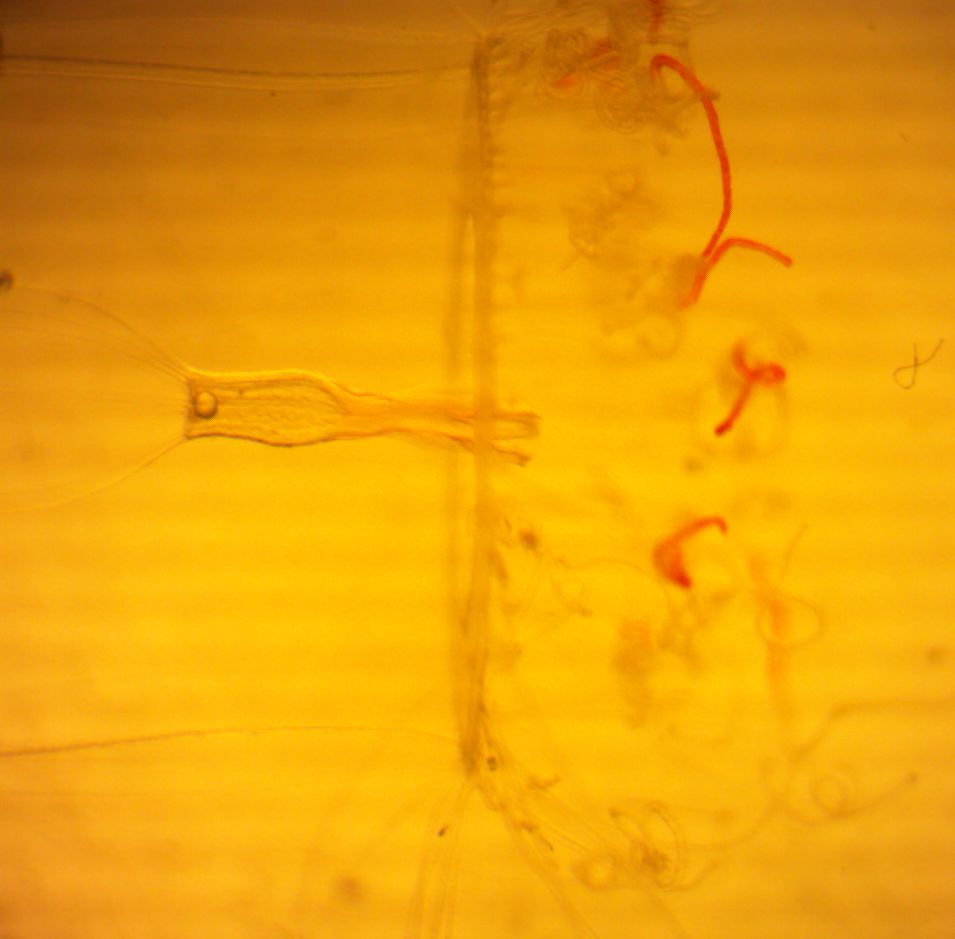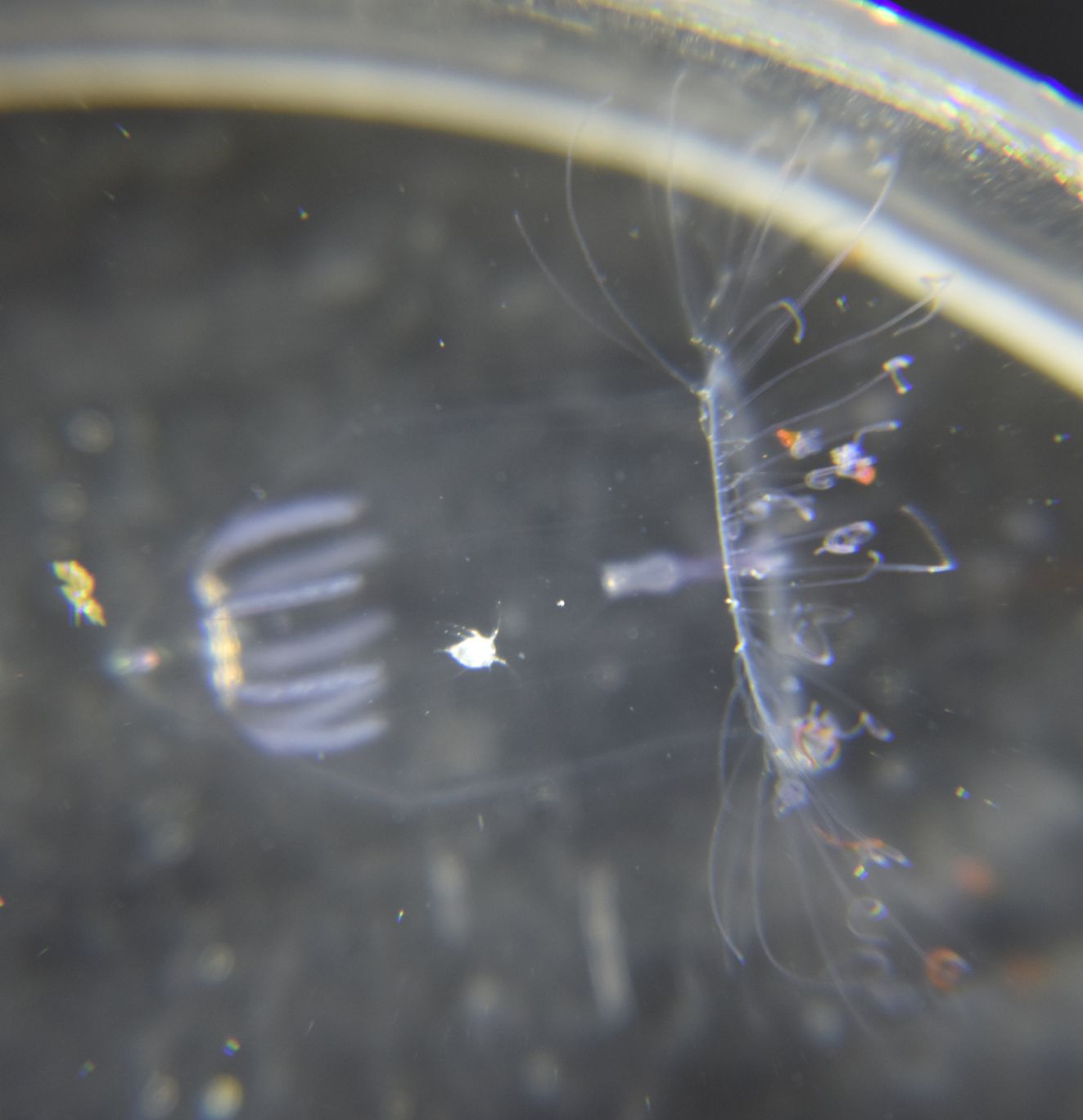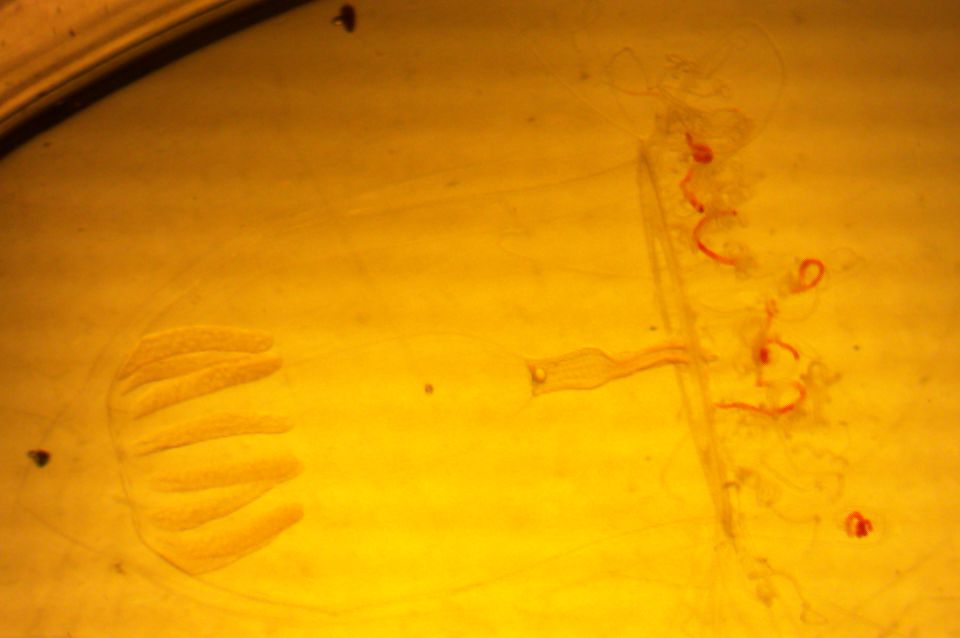Description: This common hydromedusa is about 2x as high as it is wide, and has many (80 or more) unbranched tentacles which originate at the margin of the bell. Their eight radial canals are unbranched. They have 8 club-shaped statocysts around the margin of the bell. Rather than connecting directly to the subumbrella, their stomach and manubrium are suspended down on a long peduncle and can extend well below the bell margin. There are four short lips on the end of the manubrium, and the 8 radial canals extend down the peduncle to the stomach. Their 8 gonads are sausage-shaped and hang down from the radial canals up near the apex of the subumbrella,attached only at one end. Thought to exist as medusa only (no polyp). May be colorless, or may have red, pink, or orange on the tentacles. Height 10 to 40 mm.
How to Distinguish from Similar Species:Crossota sp. is about as wide as it is tall and its stomach attaches directly to the subumbrella. Many other species have multiple gonads but which don't hang down freely from one end like a cluster of sausages, or they don't have their stomach hanging down on a long peduncle.
Geographical Range: Arctic, North Pacific, and North Atlantic oceans.
Depth Range: Surface to 200 m
Habitat: Pelagic
Biology/Natural
History: This species
can swim slowly, or activate giant axons to make rapid bursts of speed.
This species vertically migrates, living deeper by day and shallower by
night. Its diet is mainly copepods.
| Return to: | |||
| Main Page | Alphabetic Index | Systematic Index | Glossary |
References:
Dichotomous Keys:Carlton, 2007
Kozloff, 1987, 1996
General References:
Wrobel
and Mills, 1998
Scientific Articles:
Web sites:
General Notes and Observations: Locations, abundances, unusual behaviors:

This closeup photomicrograph of the stomach and manubrium
shows the long gelatinous peduncle
on the left and the 4 short lips on the end of the manubrium
on the right, plus the club-shaped statocysts
and the many tentacles,
some of which are colored pinkish red, hanging from the bell
margin. Photo by Dave Cowles, August 2025

This photograph in natural light shows the pinkish colors of the tentacles
in this individual. A crustacean nauplius
larva is clinging to it, apparently inside on the subumbrella.
This is interesting because this species eats copepods and so likely
has
toxin effective against crustaceans. Photo by Dave Cowles, August 2025
Authors and Editors
of Page:
Dave Cowles (2025): Created original page
CSS coding for page developed by Jonathan Cowles
Salish Sea Invertebrates web site provided courtesy of Walla
Walla University
